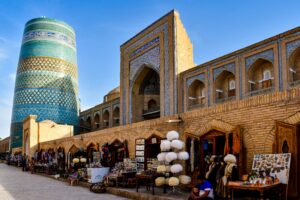
DISCOVERY TRAVEL FORUM:UNBOXING THE BRAND
DISCOVERY TRAVEL FORUM: UNBOXING THE BRAND The practice of international and local conferences is not new. It is a very effective way to focus on

DISCOVERY TRAVEL FORUM: UNBOXING THE BRAND The practice of international and local conferences is not new. It is a very effective way to focus on

THE MAIN THING IN BISHKEK IS CONNECTIONS In 2023, the cultural treasury of Bishkek received a new addition: the immersive audio performance ‘Connections’. This theatrical

THE CREATIVE INDUSTRIES AS A NEWDRIVING FORCE FOR THE CONOMICDEVELOPMENT OF KAZAKHSTAN We use the products of the creative industries every day: for example, when

TOURISM INDUSTRY IN THE CENTRAL ASIAN REGION: KEY CHALLENGES AND OPPORTUNITIES FOR SUSTAINABLE FUTURE The Central Asian region, including Kazakhstan, Uzbekistan, Kyrgyzstan and Tajikistan, is
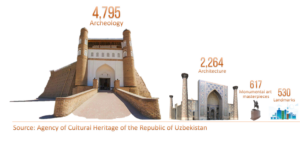
NEW MODEL OF TOURISM FOR THE NEW UZBEKISTAN Uzbekistan is the only country in Central Asia that borders every country in the region. Uzbekistan is
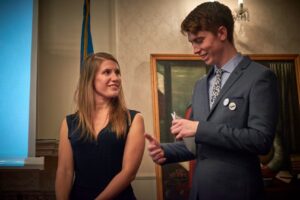
CREATE A HYPER-LOCAL WORLD by Natalie Bays, Founder of the NO Collective I was born into the first generation to fully immerse themselves into the
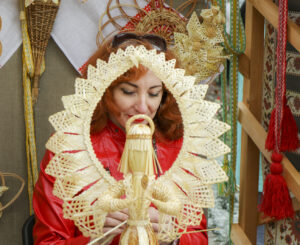
WHY IS BELARUS CONSIDERED THE TREASURE OF EASTERN EUROPE? Belarus is a country with an ancient history and rich traditions, enchanting nature and astonishing architecture,
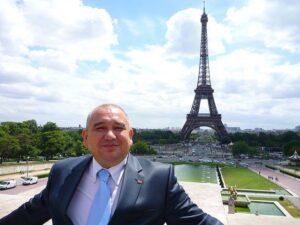
HOTEL MANAGEMENT ‘INSIDE OUT’ FOR LOCALS AND INTERNATIONALS When it comes to a process as complex as hotel management, many tourists don’t even think about

GASTRO TOURISM: A NEW ADVANTAGE FOR CENTRAL ASIA Central Asia has a culinary legacy that is mind boggling. Like the region’s history it spans millennia
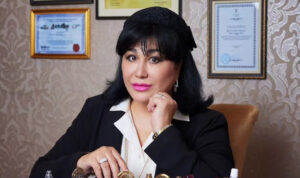
OCA Magazine: 15 years of success in building the land bridge with Eurasia in the heart of the storm Since 2009, OCA Magazine has become

LIKE A MOVIE.A NEW MODEL OF DESTINATION MARKETING Today, tourism and migration have become part of modern life. And since the laws of economics dictate
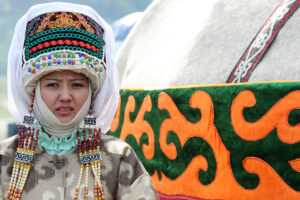
DISCOVER CENTRAL ASIA IN ITS ORIGINAL TRADITIONS Following the global pandemic, alternative accommodation projects have become increasingly popular in Central Asia, with a variety of
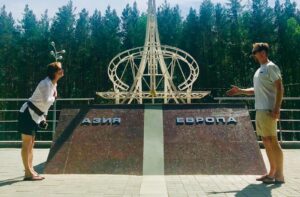
ADVENTURES OF EUROPEANS IN CENTRAL ASIA. GUIDELINES FOR GUIDES “Just bring us guests”. It’s a familiar phrase among tourism providers in countries developing tourism. But
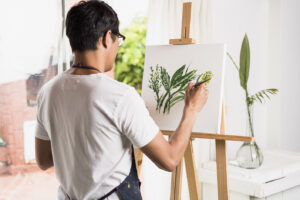
ARTIST IN RESIDENCE: NEW ATTRACTION The sheikhs of the United Arab Emirates paid France $525 million to rent the name “Louvre” for the museum in
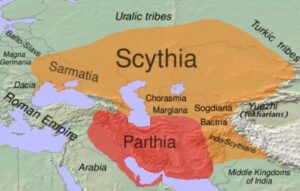
JUST LEGENDARY Surprisingly there are quite a few links between British Legends and Central Asia. Quite a few of these links are already known, but
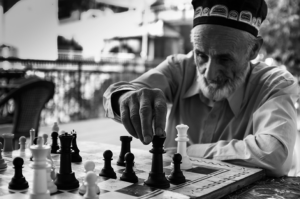
INVESTMENT ATTRACTIVENESS OF EVENT TOURISM Silk Road Media and the Eurasian Creative Guild (London) have been developing the tourism potential of the Eurasian region for
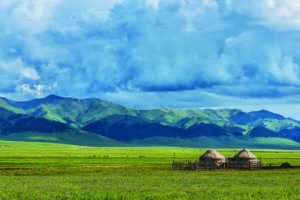
TRAVELLING NOTES Many famous explorers began their journeys after reading books. The travel notes of merchants, seafarers, warriors, and minstrels are helping us reconstruct the
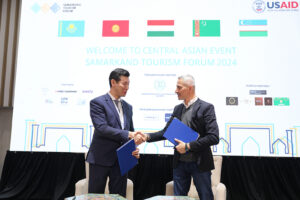
INTERNATIONAL FOCUS ON TOURISM IN CENTRAL ASIA The pace of development of the tourism industry in Central Asia is impressive, and the international community is
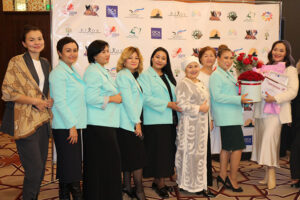
EURASIAN CREATIVE GUILD (LONDON)AUTUMN FESTIVALS From 25-30 September 2023, the resort of Burabay (Kazakhstan) hosted four ground-breaking events: Poetry & Art Festival III Voices of
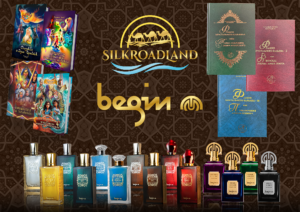
THE SPIRIT OF THE GREAT SILK ROAD TREASURES Gulchekhra-begim Makhmudova is one of the most important women in Uzbekistan and the CIS countries in the
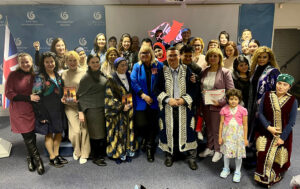
“Vibrant Navruz and Iftar Celebrations in London: A Cultural Extravaganza” The Navruz and iftar celebrations held in London were a resounding success, marking a vibrant

A SWORD IN A STONE: THE FUTURE OF MUSEUMS Museums are an important point of attraction for many people for many reasons over the years.

IMPROVING EDUCATIONAL NEEDS FOR AUTISM IN KAZAKHSTAN The number of identified cases of autism in children in Kazakhstan has increased fivefold over the past 7
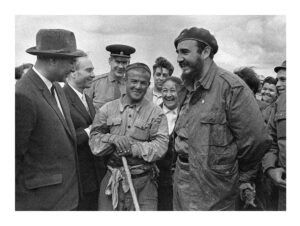
FUND HONOURS SHARAF RASHIDOV’S LIFE On March 27, 2017, the President of Uzbekistan Shavkat Mirziyoyev initiated the celebration of the 100th birth anniversary of the

TRENDS IN RECRUITMENTIN INTERNATIONAL SCHOOLS SINCE 2020:INSIGHTS AND POSSIBLE CAUSES Recruitment in international schools has witnessed significant shifts and trends since 2020. The global pandemic,
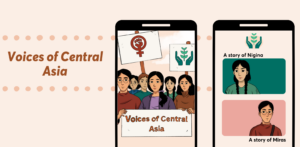
PLAYING FOR A BETTER CENTRAL ASIA: INTRODUCING VOICES OF CENTRAL ASIA Do you know what lies beyond the mainstream media’s headlines when it comes to
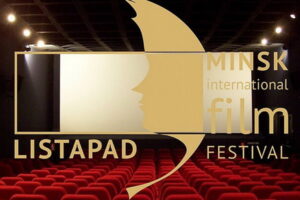
The twenty-ninth film festival “Listapad” held from November 17th to 24th became a significant event of autumn and the film industry in Belarus. Such a

THE FUTURE OF HIGHER EDUCATION IN CENTRAL ASIA After World War II, a massive expansion of higher education took place. What had traditionally been a
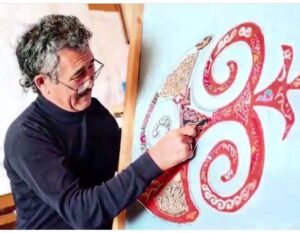
OCA #49 People edition Interview with MUKHAMEJAN ZEINELKHAN TRADITIONAL KAZAKH EMBROIDERY “KESTE” AT THE INTERNATIONAL LEVEL OCA Magazine: Tell us, please, about yourself and your
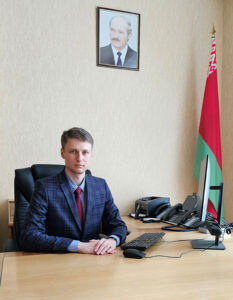
BELARUS’ EDUCATION POLICY FORGES A NEW PATH In the Republic of Belarus, education is the basis of statehood; it ensures the reproduction of personnel and
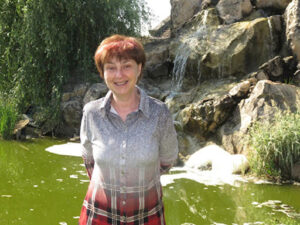
OCA #49 People edition Interview with KARINA MULIAR MY GOAL IS TO MAKE PEOPLE THINK ABOUT HUMAN VALUES OCA Magazine: Tell us, please, about yourself
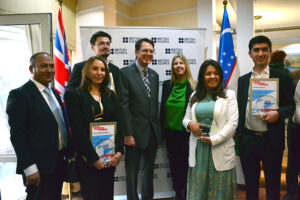
PARTNERSHIP FOR A NEW UZBEKISTAN The British Council has been supporting systemic education reform and cultural relations between Uzbekistan and the United Kingdom for the

OCA #49 People edition Interview with AL ZATURANSKY MY GOAL IS TO SPEAK TO MY READERS AT EYE LEVEL OCA Magazine: Please tell us about
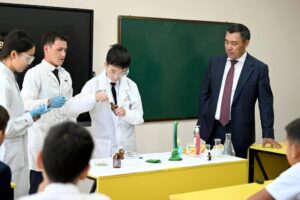
EDUCATION IN THE KYRGYZ REPUBLIC Education is one of Kyrgyzstan’s priority areas that will be a key factor in determining the development of the country.
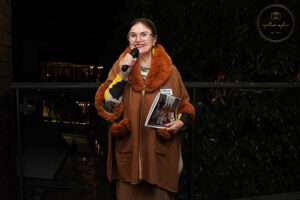
OCA #49 People edition Interview with LIUDMILA LARKINA EACH PERSON FOR ME IS NOT A WRITTEN BOOK OCA Magazine: Please tell us about yourself and
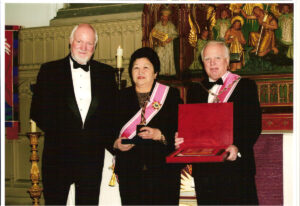
PRIMUS INTER PARES. KAZAKH ABLAI KHAN UNIVERSITY OF INTERNATIONAL RELATIONS AND WORLD LANGUAGES IS THE FLAGSHIP OF FOREIGN LANGUAGE EDUCATION INTERVIEW WITH SALIMA KUNANBAYEVA For

TAJIKISTAN – AN ANCIENT HISTORY AND BRIGHT FUTURE Tajikistan has a long and rich history that dates back as early as the sixth century B.C.
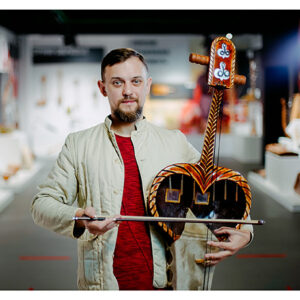
OCA #49 People edition Interview with MARAT FAIZULLIN TREAT THEIR CULTURES CAREFULLY OCA Magazine: Tell us, please, about yourself and your creative activity / workMarat

CONCEPT OF HUMANITY’S SURVIVAL STRATEGY IN THE THIRD MILLENNIUM Professors O.Sabden and A.Ashirov have as part of their ‘Concept of Humanity’s Survival Strategy in the

OCA #49 People edition Interview with GALINA SHEPELEVA TURNING ONE’S INHERENT VALUE INTO A PRECIOUS THING OCA Magazine: Tell us, please, about yourself and your
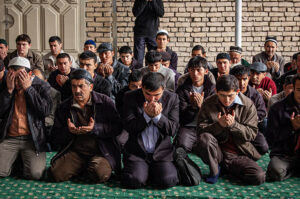
PROMOTING RELIGIOUS TOLERANCE AND HARMONY IN UZBEKISTAN The government’s commitment to democratic ideals and its choice of a secular path of development have made it
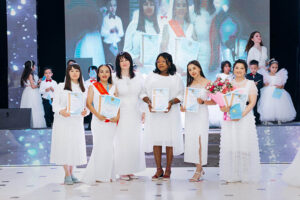
OCA #49 People edition Interview with GULNARA MAKHMUDOVA WE ARE FOR PEACE! OCA Magazine: Tell us, please, about yourself and your creative activity/work.Gulnara Makhmudova: Good
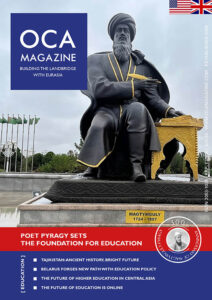
OCA# Education edition Welcome Word “Education is what remains once what you have learned at school has been forgotten” This famous saying (which has a
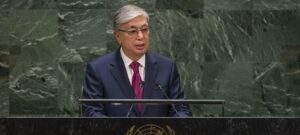
On the UN Day of Nuclear Disarmament Assessing the Impact of January 2022 Unrest on Kazakhstan’s Economy, Politics and Social Order. In January 2022, Kazakhstan

Kyrgyzstan’s debt to China: yet another lever of influence? BISHKEK — Stagnation of the world’s economy, decreasing international trade and growing inflation put the spotlight

RIPPLES OF CHANGE IN CENTRAL ASIA At the end of 2022 I travelled to Kazakhstan, as Chairman of Eurasian Creative Guild to report on the
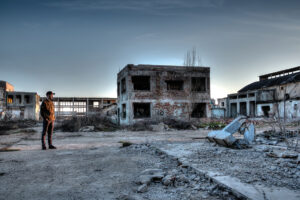
THE FALL OF RUSSIA IN CENTRAL ASIA As a committed “Eurasianist”, I find it odd when pundits tell us this war between the Russians and

EVERYBODY’S TALKING ABOUT IT! I am finally in Astana, the capital and my old home. It is still winter but the sun is out and
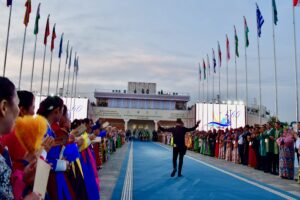
THE CONTEMPORARY ART OF BAHKSHI A NEW SOUND OF THE GOLDENHERITAGE OF UZBEKISTAN Uzbekistan is a country wrestling with its past and its future. Ancient

CAN PUBLIC-PRIVATE PARTNERSHIPS SOLVE CENTRAL ASIA’S CHALLENGES? Creating Water Purification Systems for Disaster Response: A Case Study National, state and local governments frequently face complex

KYRGYZSTAN TOURISM KEEPS EVOLVING INTERVIEW WITH ELENA KALASHNIKOVA Elena Kalashnikova was born in 1968 and has had an active and fulfilling life based around her

Open Doors to the World of Art: Announcement of the International Festival in Kazakhstan The festival “Voices of Friends: Poetry and Visual Arts” brings together
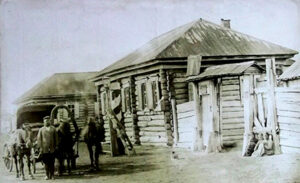
THE ROAD TO BOROVOE For people that live in the beginning of the third millennium, it’s hard to believe that a hundred years ago trips

5TH EURASIAN FILM FESTIVAL DESCENDS ON LONDON From the 25th to the 30th May 2023, the Fifth Eurasian Film Festival was held in Romford, London.

PEOPLE’S DIPLOMACYIN ACTION AT BURABAY In European countries they have a tradition of taking a “gap year” after college before entering university. Usually this year
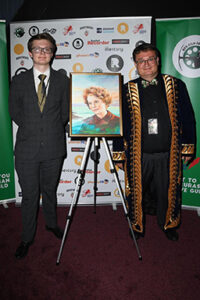
The city of Jizzakh has become a symbol for the prestigious London Film Festival. On May 30th, 2023, at the fifth ECG Film Festival in
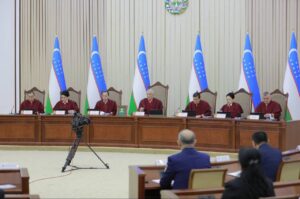
Constitutional referendum in Uzbekistan: a course to continue profound democratic reforms A national referendum on the law on the new Constitution will beheld in Uzbekistan

The Kazakh Spring. As I am being driven along the highway from Almaty towards Taldykorgan, the billboard posters have been changed from the usual images
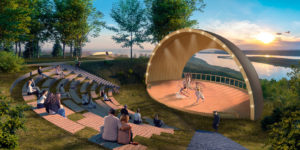
By the middle of the 19th century, the military-Cossack colonisation of the Steppe continued with less stress and risk. In 1849, not far from the
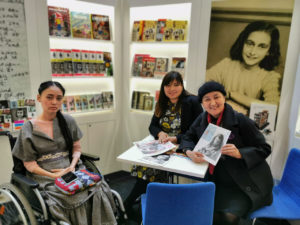
I cannot believe that she left us at the age of 37 in the last week of May 2022. I met her at Kitapfest in
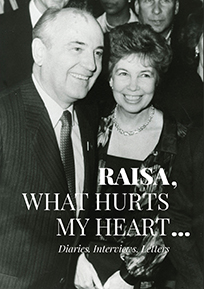
So much of the detail and truth of what the Soviet Union was is absent from discourse in the West and in the FSU countries.

The concept of digital economy is an activity directly related to the development of digital computer technologies, which includes services for the provision of online
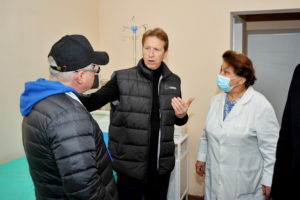
The Former Soviet Union has occupied Ambassador Daniel Speckhard’s professional career (and personal interest) since the 1990s. He initially served as director of policy and
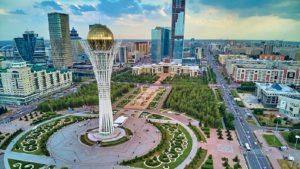
The elections in Kazakhstan have concluded and outside even the weather has warmed a little and the sun has melted some of the frozen pavements.

Happy New Year! Black swan events are supposed to be unexpected, of large magnitude and consequence, and very rare. Perhaps once a decade or once
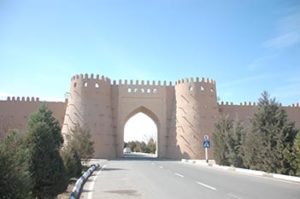
Uzbekistan’s economy is going from strength to strength. The European Bank for Reconstruction and Development (EBRD) expects the country’s GDP to show 6.5% growth in
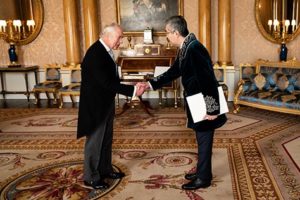
INTERVIEW: HIS EXCELLENCY MAGZHAN ILYASSOV,AMBASSADOR TO THE UNITED KINGDOM OF GREAT BRITAIN AND NORTHERN IRELAND Diplomatic relations between the Republic of Kazakhstan and the United

INTERVIEW: Her Excellency Cathy Leach, Ambassador to Kazakhstan Ms Kathy Leach started her role as Her Majesty’s Ambassador to the Republic of Kazakhstan in August

Rotary Fountains in the Heart of Eurasia Our attention was attracted by a wonderful project in the city of Almaty – the southern capital of

The Turkic World: A Concept of Co-operation Between Central Asian Countries What is the modern concept of co-operation between the Central Asian countries and why
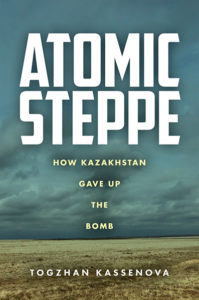
Book Review: ‘Atomic Steppe: How Kazakhstan Gave Up the Bomb’ Kazakhstan – for 30 years a reliable security partner for the West – has said
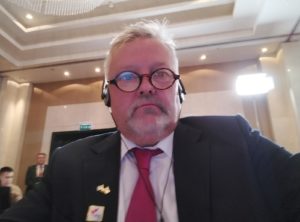
As the world’s economic woes are broadcast across the media and governments and, financial institutions battle the potential recessions some developing nations are seemingly faring
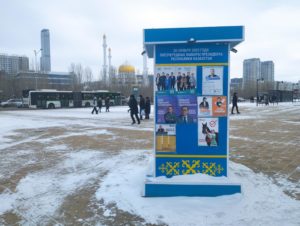
By the time the milky sun manages to burn off the early morning frozen mists blanketing Astana over ten percent of the population have voted
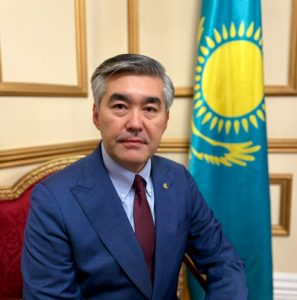
Kazakhstan is about to reach a major milestone in its democratic development. While elections have taken place regularly since our independence in 1991, the upcoming

On 1 September 2022, during the State of the Nation Address, President Tokayev announced snap presidential elections to take place, insisting that a “new mandate

As part of the ECG festival in partnership with Orzu arts we are hosting Open Eurasia international art festival in London, UK. Dates 21-26 December,

The Interactive Map as a visual documentary database of collective memory about Sharaf Rashidov and how it helps in the educational process. November 6th, 2022
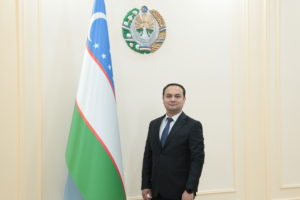
TUIT: Convergence of digital technologies in education … In order to achieve progress, we must master digital knowledge and modern information technologies. It will allow

QUALITY ASSESSMENT OF PRESCHOOL EDUCATION IN RUSSIA Disclaimer: this article is based on the author’s personal experience of 10 years working in the educational system
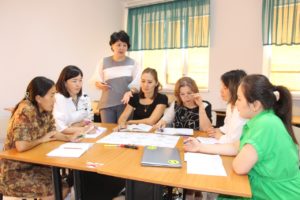
The qualification of the teaching community The responsible work to strengthen the independence of Kazakhstan and to develop high spirituality and citizenship in the country

Implementing the European standard in foreign language teaching through cooperative and collaborative learning The main purpose of learning a foreign language in higher education in

To change or not to change: time to decide For decades, Central Asian countries were establishing their national systems of education. Their primary task was
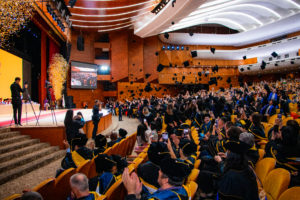
Why Kazakhstan needs radical reform to modernize its education system and how it should be done Since its foundation in 1991, KIMEP University has provided
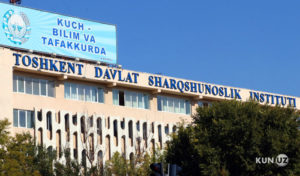
ORIENTAL STUDIES IN UZBEKISTAN: HISTORY AND MODERNITY The contribution to the development of education and science must always be timely and relevant with the standards
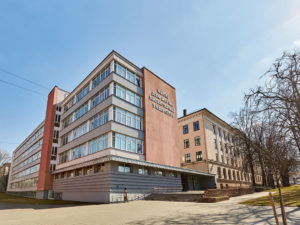
Education system in the Republic of Belarus Higher educational institutions of the Mogilev region Education is a strategic State asset. The Republic of Belarus belongs
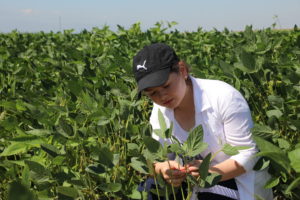
The Kazakh National Agrarian Research University as a research university, has achieved success and recognition at the national level and aims to be recognized by
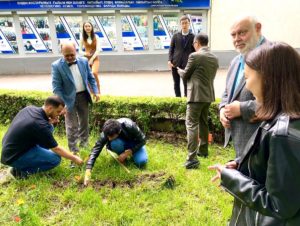
Mobilizing knowledge management for dealing with climate change and Sustainable Development Goals The world’s communities face among many challenges related to climate change and rising
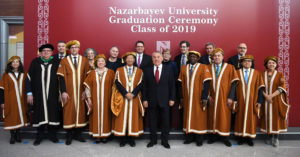
HOW DO UNIVERSITIES CREATE SOCIAL IMPACT? THREE EXAMPLES FROM CENTRAL ASIA – THE HERITAGE ALLIANCE OF THE NEW SILK ROAD, CONSORTIUM OF GENDER SCHOLARS AND
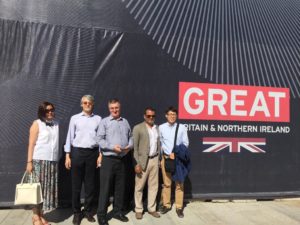
“Science and Industrial Policy Options for Resource Rich Eurasia’’ The Silk Road which historically signifies this region in particular has lent itself to defining and
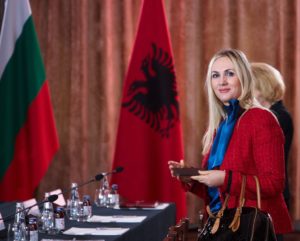
Tirana : European Capital of Youth 2022 aims to empower the future of education in Albania. Even as far back as 2017 UNICEF were celebrating

The religious world in all its diversity is waiting for the central event of the year – the VII Congress of Leaders of World and
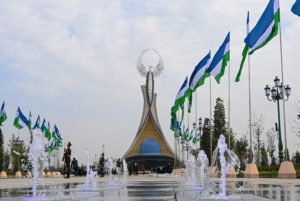
31 YEARS YOUNG UZBEKISTAN: SUSTAINABLE PROGRESS FOR FURTHER PROSPERITY On september 1, 2022 Uzbekistan celebrated the 31st Anniversary of its Independence. From the very beginning
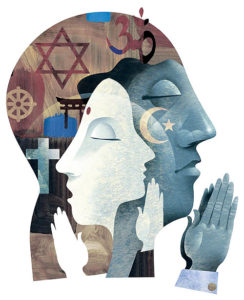
At present, representatives of 130 ethnic groups and 18 religious denominations live in Kazakhstan, among them – Muslims, Orthodox, Catholics, Protestants, Jews, Buddhists. Throughout the
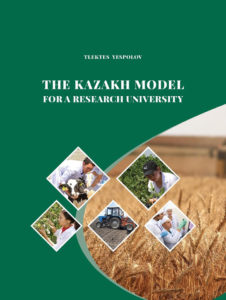
New Book Seeks to Help Fight Against Coming World Hunger…and Help Solve Other Critical Issues Together with the editors of Hertfordshire Press (Great Britain), the
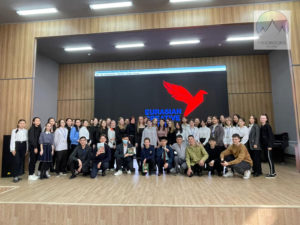
A Master Comic Visits Schuchinsk For the first time, school children and students of the Burabay district had the opportunity to take part in master
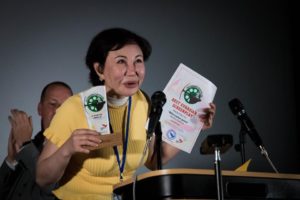
The Independent Eurasian Film Festival Celebrates its Fourth Anniversary On May 19-25 in the heart of London (Romford) the IV ECG Film Festival, together with
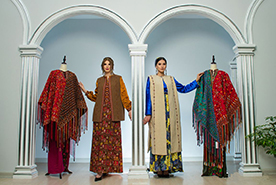
A Turkmen Tour of Fashion Simplicity without combinations Turkmen dress is simple and of the same type. Tunics worn next to the skin, wide trousers,

The Mysterious Cave Spring Discovering the cultural heritage of Kazakhstan Zhylagan-ata is located in the Turkestan region, it is included in the map of sacred
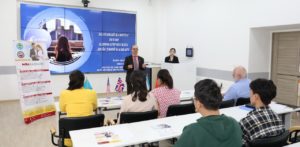
Greening Cities Through Green Campuses Over the past few years, the themes of sustainable development and the challenges related to climate change are rapidly moving